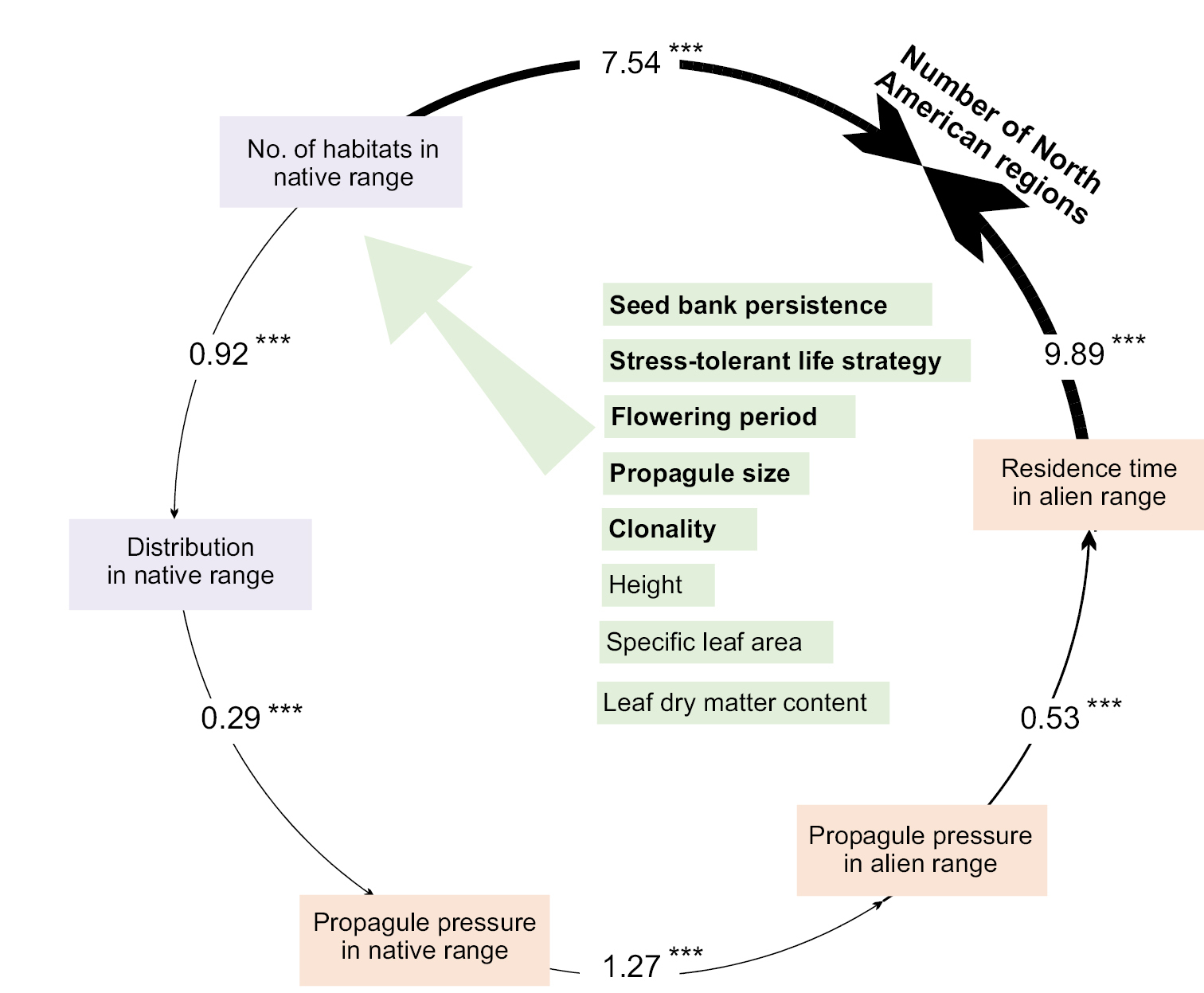
|
||
|
The number of North American regions in which Central-European species have become naturalised is driven by the combination of factors related to geographic attributes (the species’ performance in its native range, i.e. habitat niche and distribution); propagule pressure (measured by using proxies related to human use of the species both in its native and invaded range) and residence time (the time since introduction to North America) that represent the event-related factors; and a suite of alien species traits that affect the species’ invasion success indirectly, via their effect on the habitat niche in the native range (see Fig. 1 and 2 for explanation of colour codings); significant traits are shown in bold. The width and magnitude of numbers on arrows showing relationships between drivers is proportional to the value of the coefficient. Significance is indicated as: *** p < 0.001. Adapted from Pyšek et al. 2015. |